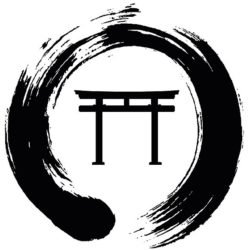What is a dojo?
The character ‘Do’ (sometimes written as Dao or Tao) means The Natural Way or The Higher Path. Therefore, a Dojo has often been considered a place to practice the Natural Way or Higher Path, ultimately leading to enlightenment. In this light a Dojo is so much more than just a training studio; it is a place for deep personal transformation.
In ancient times a Dojo was equivalent to a temple and acceptance was considered a great privilege. To be accepted you needed your parent’s consent, good references, and the willingness to undergo intense and dedicated training. Bowing before entering the Dojo is another symbolic gesture that students of The Way practice to help raise their awareness. Before stepping onto the mats, we all do a slow bow as a way of reminding ourselves that we are entering the Dojo to leave our ego behind and transform ourselves. Bowing once upon entering and leaving the Dojo is customary.
ATTENDANCE
All students are to arrive 5-10 minutes early for their scheduled class time to warm up their bodies and prepare for Mokuso (meditation time) and formal bow-in. Be careful to not disturb a class once the meditation period has begun. (Place your things down quietly). If you are late, you must obtain the instructor’s permission before entering the training floor.
Each student must remain for the entire class period once the class has started.
If you need to leave early, you need to obtain the instructor’s permission before class starts.
If you need to leave the class once the training period has started, you must obtain the instructor’s permission before leaving the training area.
If there is an EMERGENCY such as illness, or for safety reasons, you may IMMEDIATELY leave the mat.
CONDUCT
Shoes and socks are to be removed before entering the training area
All students are to stay focused and on task. Failure to do so can result in the student being asked to sit out of class.
Fighting is not tolerated inside or outside of the dojo.
We are taught that courtesy, honor, and humility are held in high regard, and fighting disregards all of these.
We are family and seek to support each other and our community in excellence.
Drawing a sword to show off or acting against Iaido’s fundamental beliefs, inside or outside of class, will not be tolerated.
Talking should be kept to a minimum and never speak while the Sensei is speaking.
Foul and/or perverse language is not acceptable and will not be tolerated.
Hands are not to be in pockets. Place your hands at your side or clasp them in front of you when not using them.
Unsupervised sparring and/or training is not allowed.
Never use someone’s equipment without permission. If you break something, you must replace it. Never borrow anything you are not able or willing to replace before the next class.
Gum chewing is prohibited during class.
Keep the school clean and clean up after yourself and others.
Quiet is expected during seiza (traditional seated position) at the beginning and end of class. This time is set aside for meditation practice or mokuso.
Your behavior inside and outside the dojo is a representation of the Southern Oregon Iaido Club and the Way of the sword. Any behavior bringing our dojo into disrepute may result in the cancellation of training.
PHYSICAL PREPARATION
Warming up is strongly encouraged prior to class and it is the student’s responsibility. Stretching prepares the body for the rigors of practice. It is important to warm up properly before any workout to prevent injury. and may enlist the help of a senior student. Class warm-ups will only consist of warming the exact muscle groups and teaching dexterity skills that will be used in that class.
After preparation, the students should sit in seiza quietly next to their swords to mentally prepare for class.
MENTAL PREPARATION
The “Dokkōdō” (Japanese: 獨行道) (“The Path of Aloneness”, “The Way to Go Forth Alone”, or “The Way of Walking Alone”) is a short work written by Miyamoto Musashi a week before he died in 1645.
It consists of 21 precepts. “Dokkodo” was largely composed on the occasion of Musashi giving away his possessions in preparation for death, and was dedicated to his favorite disciple, Terao Magonojō , who took them to heart.
21 PRECEPTS OF THE SAMURAI


